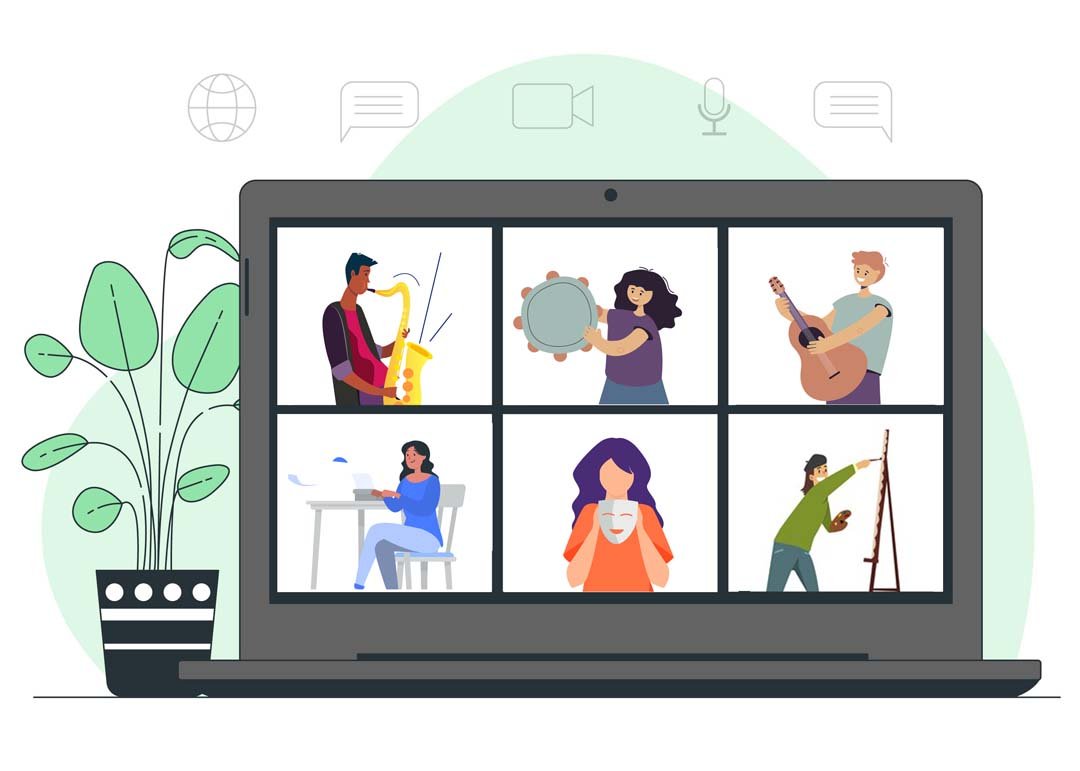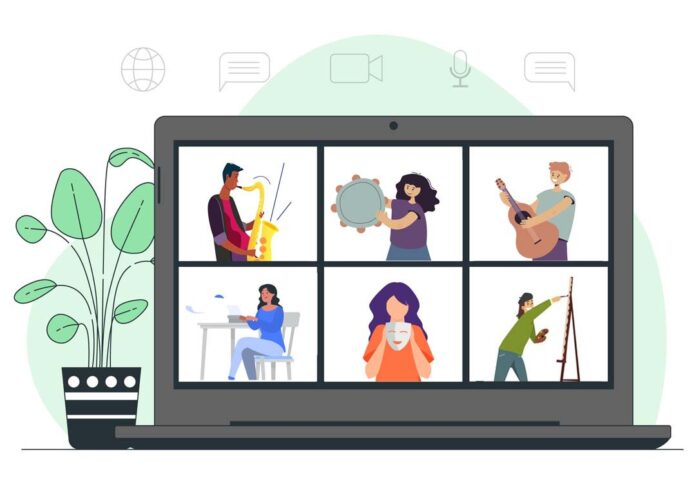
After a year of working from home, remote teams are at risk of losing motivation. Luckily, business leaders can revitalize teams and spark fresh momentum by drawing on techniques used by more creative individuals.
For example, studies show that jazz musicians’ improvisational skills are achieved via heightened sensory activity in the brain alongside a deactivation of cognitive control functions, leading to an unbridled process of self-expression. This state of flow isn’t something that only jazz artists can reach. It spans beyond the music sphere and can be summoned by workers anywhere in the world. Everyone can tap into free-flowing creativity to compose ideas outside the usual boundaries.
Here are some ways to borrow from five artistic disciplines to propel your team’s creative thinking and break up the monotony of remote working:
Paint new perspectives through visual arts
Visualization works through brain imagery, with neurons interpreting images as if they were reality. That means that when we visualize something, our brain cells perform similarly to the way they would if it were actually occurring. Let’s consider an example. We had employees at a nonprofit visualize attending an Academy Awards ceremony. They were asked to picture which awards they would not have made the shortlist for, which awards they were nominated for and which awards they ended up winning. This helped them realize what they were and weren’t set up to achieve: By visualizing the scenario, they could understand how they needed to reorganize and bring their goals to fruition.
Another way to borrow from the visual arts is by drawing answers to business problems. Drawing is a powerful way to open the raw, creative side of your mind. When you encourage people to change the medium they typically use to answer open-ended questions, you replace the structured, step-by-step process with something more exploratory. People shouldn’t be drawing a flow chart or Venn diagram, but should otherwise be given minimal direction or limitations.
Entertain, energize and escape in theatrics
Improv helps people learn to read cues, laugh at themselves, listen more intently and loosen up. And because improv is a team sport, it’s ideal for connecting everyone through a shared scenario. Improv doesn’t have to involve full-on dramatics (which can sometimes scare people away). You can pull elements of improv into team meetings and exercises so people won’t immediately withdraw from the spotlight.
For example, you can get your team members to imagine they’re starting a new company with the sole aim of outdoing your current business. They have all the investment and materials they need, and they have to describe how they’d blow open the market while embodying a different character. Push them to pay attention to the details of this fictional brand’s personality and approach. Are they ruthless where your current company is cautious? Are they empathetic where your company is objective? Creating a character to counterbalance your own allows you to detect your weaknesses and adopt powerful traits you’ve been too shy to execute.
And don’t forget the classic improv game, “Yes, and…,” which teases the state of flow out of people by getting them to riff off one another continuously. Someone begins the game with a statement, and the participants have to provide follow-up statements starting with “Yes, and.” The game teaches players to accept all ideas, stitch them together and compile something using only their reflexes.
Create harmony through dance
Over a third of remote workers worry they’re not moving enough at home, now that commutes and coffee breaks with colleagues are scarce. That sedentary activity can lower employees’ energy and motivation over time.
Physical movement triggers the release of endorphins, which interact with receptors in the brain, stimulating positivity. A great suggestion to get your employees moving is a walking group call where people in attendance are on the go as they chat, stretching their physical and mental muscles.
Every now and then, you can set up a Zoom dance party where people request songs, dance (having the camera on is optional), sing or simply enjoy the music for a while. Not every second of the workday has to be serious, and this is a shared moment to be silly and human. When you propose these activities, consider the needs of people with disabilities, so that everyone can participate.
Use poetry to merge creativity and content
Poetry helps people extract thoughts from the recesses of their mind in a completely free-flowing form. It isn’t about sonnets and iambic pentameter—poetry can be as abstract and nonsensical as you like.
Try implementing a poetry session in the morning, asking people take a few minutes to note their spontaneous poetic ideas. It could be a stream of consciousness, a six-word response to a prompt or a carefully structured poem. Don’t force people to share their creations with the team unless they want to draw out their potential—to see whether any themes emerge from their internal monologue and how these can apply to what’s happening at the company.
If people respond well to the poetry sessions, you could even organize regular online poetry slams or open mic events to give people the space to experiment with their communication style.
Jam through new concepts and connections with music
Jazz musicians’ state of flow lets them access different parts of the brain and perform in a wholly fluid manner. Like any type of flow, it gains momentum as it progresses, but there are no expectations—it’s purely reactionary.
When it comes to meetings, use music to insert energy into silences. You could curate a playlist for when you’re waiting for people to join or when people are reflecting on a certain topic. This music can help people relax or carry them into a pensive state. You could also propose a shared playlist, where people add songs based on their mood or recommendations. Music has an innate ability to connect people and allow them to share a part of themselves. And because music should be universal, be conscious of anyone with hearing impairments and offer them tools, such as transcriptions, music visualizers or specific-frequency songs.
The arts have an important place in business. They’re not just fun for fun’s sake— they allow employees to channel thoughts and pent-up emotions into something constructive. If you remote team is feeling bored and uninspired, artistic activities can be a way to unite people and feel out new flows. Try out these artistically inspired techniques to see if they help your team members tap into their creativity.
Kenny White is chief creativity architect at Funworks.
Image credits: WWW.FREEPIK.COM
Read full article on BusinessMirror

